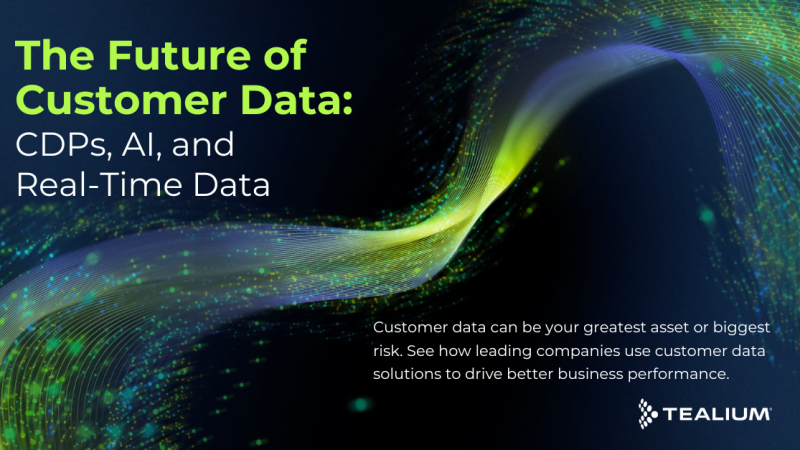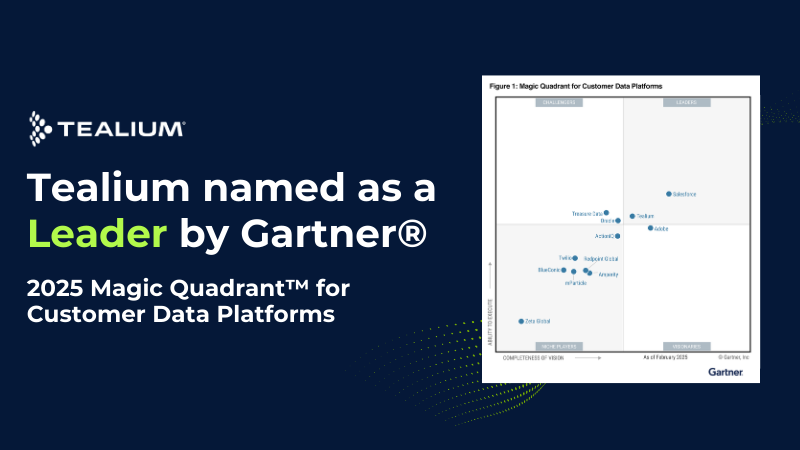Breaking it Down
The data layer is the behind-the-scenes structure that websites and mobile apps tap into for timely and consistent visitor data. The most common way to define a data layer is through the use of what is sometimes referred to as a Universal Data Object (UDO), which is written in the JavaScript programming language. The types of data contained in a data layer can be numerous and varied, including e-commerce transaction information, web behavioral data, and mobile application usage. The graphic to the right shows a web channel broken down by components.
The Customer Experience Technology Stack
It’s a “layer” because it is a logical element of the technology stack that delivers the interactive customer experience on your website or mobile app.
The Application Layer
The application layer is comprised of any number of digital vendors that support the functionality of your site, such as live chat, analytics, personalization, display advertising, and more.
The Data Layer
The data layer, which sits in the middle, transfers visitor interaction data occurring at the experience layer to vendors at the application layer.
The Experience Layer
The experience layer is the most visible. It is where the user interacts and engages with your website or mobile app.
Why Is a Data Layer Important?
The consistency provided by a data layer is crucial for building a scalable, accurate digital ecosystem. Here’s why it matters:
- Reliable Data Collection: Data layers collect information at the moment it’s generated, ensuring accuracy even as your site evolves.
- Unified Customer View: All tools (e.g., Google Analytics, Mixpanel, Segment, marketing automation) pull from the same source, aligning your data across platforms.
- Flexibility: You can redesign your website, change tools, or restructure pages without breaking your data collection methods.
Cross-Team Collaboration: Marketing and development teams work together to define what data is important, building a shared data strategy.
So What Does a Data Layer Actually Look Like?
Here’s a sample snippet of a data layer that might be found on an e-commerce page.
How Does Tag Management Fit into This Discussion?
One of the main functions of tag management is to easily map the data collected during the interactions on your web, mobile, and other digital channels to digital marketing vendors who need this data to provide a better customer experience. When a data layer is properly defined, tag management systems can easily ensure that a product name is conveyed to your web analytics provider in the same way it is to your affiliate tracking system.
Why Should You Care?
A well-constructed data layer can act as both a common dictionary for your supporting digital marketing applications and a unifying road map for how you want to communicate with your customers. Without a model for how to think about your customer interaction data, you cannot unite your applications around common definitions. The data layer represents the promise of omnichannel marketing that many digital marketers strive to achieve. A well-defined and managed data layer brings the following benefits:
- Governance: Take control of your data by establishing a governance policy around your data layer.
- Standardization: Use terminology that makes sense to your organization.
- Marketing Agility: A well-implemented data layer allows your marketing strategies to adjust quickly to changing conditions by eliminating your dependency on development resources.
- Time and Cost Savings: Save time and money for developers by eliminating constant requests for incremental changes to your website and mobile app.
Frequently Asked Questions About Data Layers
What is a data layer, and why do I need one?
A data layer is a JavaScript object that stores structured data about your website and user interactions. You need one to ensure consistent data collection across all your marketing and analytics tools, improve data quality, and make your analytics implementation more resilient to website changes.
How does a data layer differ from a tag management system?
A data layer is a structured data repository that holds information about your website and user interactions. A tag management system (like Tealium iQ Tag Management) is a tool that reads information from your data layer and distributes it to various marketing and analytics technologies. They work together: the data layer provides standardized data, while the tag management system handles the distribution of that data.
What information should I include in my data layer?
Your data layer should include information relevant to your business objectives and analytics needs. Common elements include:
- Page information (page type, category, name)
- User data (login status, user type, segments)
- Product information (for e-commerce sites)
- Transaction data (purchases, cart additions)
- Content information (article topics, authors)
- Custom events specific to your business
Will a data layer slow down my website?
A properly implemented data layer should have minimal impact on website performance. In fact, by centralizing data collection and reducing redundant code from multiple tracking tools, a data layer can actually improve site performance compared to having multiple independent tracking scripts all collecting similar information in different ways.
How do I maintain my data layer over time?
Maintaining a data layer requires ongoing collaboration between marketing and development teams:
- Document your data layer specification thoroughly
- Create a change management process for updates
- Regularly audit your data layer to ensure accuracy
- Test after website changes to confirm data is still being collected properly
- Update your documentation when changes are made
- Consider creating automated tests to validate data layer integrity
Can I implement a data layer incrementally?
Yes, many organizations implement data layers incrementally. You might start with basic page information and user data, then gradually add more complex events and interactions. This phased approach allows you to start benefiting from a data layer while spreading out the development work over time.







